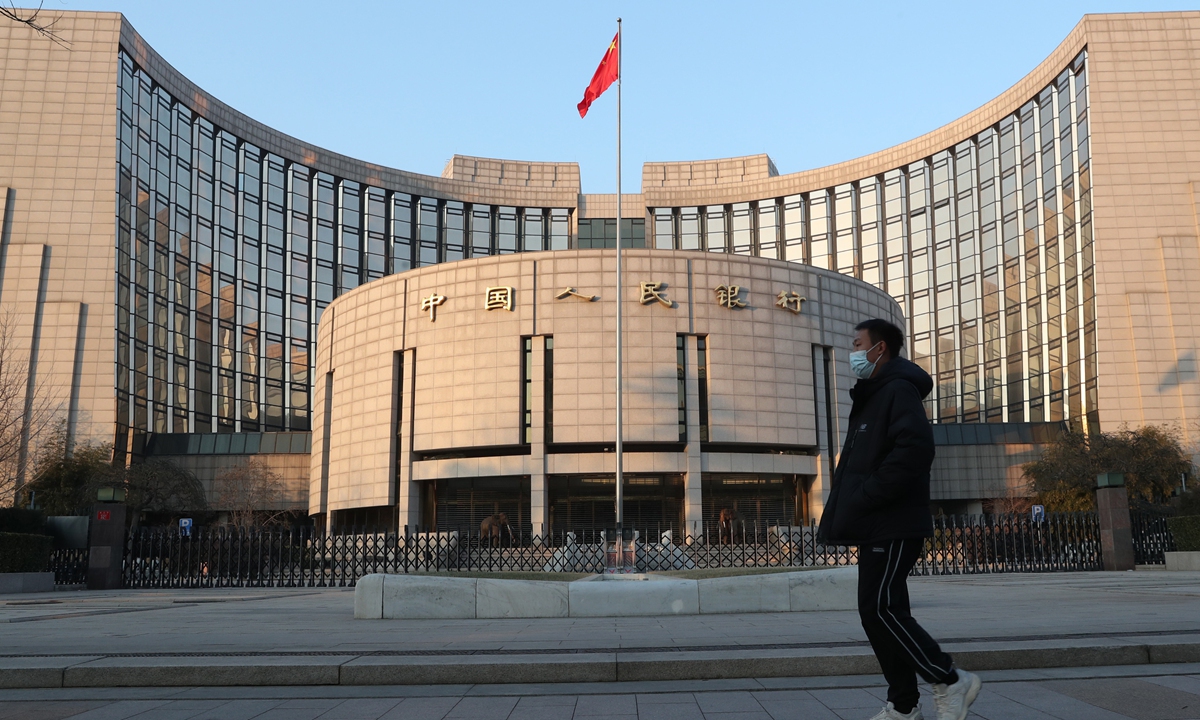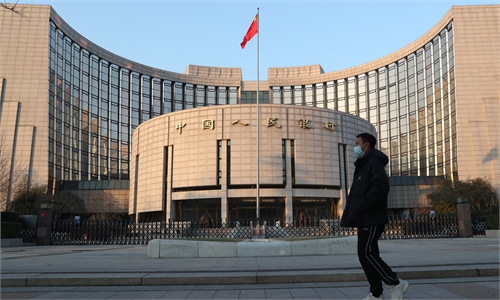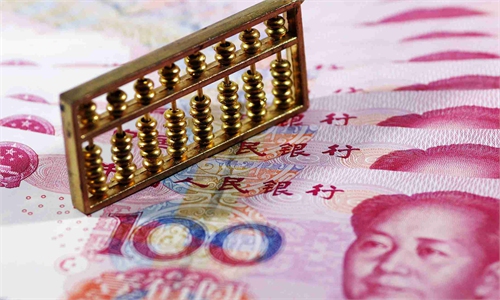
China's central bank Photo: CFP
China's benchmark lending rates for commercial banks remained unchanged for a third straight month in April, falling within analysts' expectations, with the reserve requirement ratio (RRR) cut this month offering more space for financial institutions to make interest concessions to businesses.
According to the People's Bank of China (PBC), the central bank, the one-year loan prime rate (LPR) remains unchanged at 3.7 percent and the five-year rate at 4.6 percent for a third consecutive month.
The central bank will continue to drive credit expansion to ensure a stable economic growth this year, but it will be a structural move instead of frequent interest rate cuts, according to a research report by analysts from Haitong Securities Co.
"Reducing funding costs will be carried out mainly through lenders making interest concessions, rather than constant cuts in policy rates," the report noted.
The PBC said in its regular first-quarter report that banks in more than 100 cities have reduced mortgage rates by 20 to 60 basis points (bps).
Reducing benchmark interest rates cannot be routine, and the central bank may be more cautious in cutting the rates for the medium-term lending facility and reverse repurchases, analysts said, noting China "needs to balance internal and external factors", as other major economies are starting to raise their benchmark rates.
On Tuesday, the central bank held a meeting, vowing to implement more proactive financial policies to provide timely assistance to aid the real economy. The bank asked financial institutions to step up credit to key sectors including services and logistics, calling for measures in aspects like credit resource allocation.
The central bank also pledged to deliver a full package of structural monetary policies and to effectively connect banks with businesses to maximize the effectiveness of the new measures.
The central bank's moves came after a meeting of the Financial Stability and Development Committee under the State Council on March 16, which called for a pro-active monetary policy to support economic development, while new loans should maintain appropriate expansion.
In addition, Premier Li Keqiang said at a State Council Executive Meeting last week that the country will tap monetary policy tools at an appropriate time to provide more financial support to small and micro-sized companies hit hard by the coronavirus resurgence.
The central bank said on Monday that it had handed over 600 billion yuan ($93.78 billion) in surplus profits to the country's central budget as of mid-April, which will mainly be used to facilitate value-added-tax credit refunds and increase the central government's transfer payments to local governments.
On Friday, the bank announced a universal 25 basis points reduction in banks' reserve requirements, releasing about 530 billion yuan in capital. The smaller-than-expected RRR cut epitomizes the central bank's policy orientation, as imported inflationary pressure is weighing on the policymakers.
Global Times



